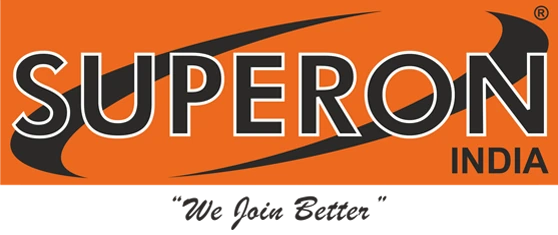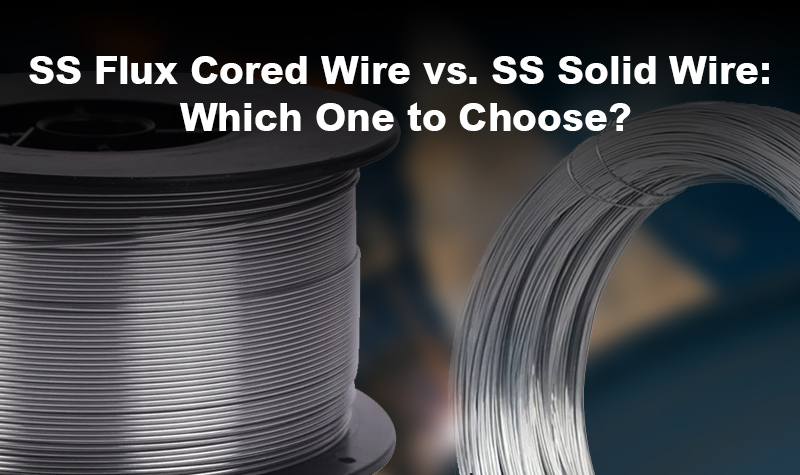Stainless steel is the most widely used material in industries as it is extremely strong, rust-resistant, and very durable. But welding is the only method to join two stainless steel. We can then use stainless steel flux-cored wire and stainless steel solid wire. Comparing the two, flux wire has its own shielded gas and it can be used quite well for outdoor welding thanks to its special coating. Solid wire, on the other hand, is cleaner, the welds of which are more precise and requires an external gas supply. But the only thing that you need to keep in mind is choosing the right wire based on the type of job.
The use of flux-cored wire is certainly the best option for conditions in which the operating site is not under control and the conditions are rough. Solid wire, meanwhile, is the type of wire that you need when you want a controlled environment for welding. Both help in achieving highly strong and corrosion-resistant stainless steel welds. As you know, welding is highly used in different industries as it is the technique through which fused metals are used to make the strongest and sturdiest joints. The most commonly used options are SS flux cored wires and SS solid wires. In this article, we are going to examine all the differences and similarities between stainless steel flux cored wire vs. stainless steel solid wire, and also explain when and where you can use them.
Overview of Stainless Steel Flux Cored Wires
Stainless steel flux cored wires are a special type of welding wire that is tubular with flux in the core. The flux contains different compositions that work as a stabilizer and produce low spatter which in turn protects the weld from oxidation and contamination. These wires offer good quality physical characteristics and are broadly used in situations where corrosion resistance is very important.
Why Are Stainless Steel Flux Cored Wires Used?
Stainless steel cored flux wires are used for:
- Strong and Durable Welds: They are capable of providing unmatched tensile strength and are less prone to crack after the welding process, even in the harshest conditions.
- Improved Arc Stability: The flux inside the wire makes the arc extremely stable, which is why they tend to be cleaner and smoother welds.
- High Deposition Rate: They also enable faster welding, therefore, improving overall productivity.
- Versatility: No matter the position they can be used in, thus making them suitable for diverse welding tasks.
Types of Stainless Steel Flux Cored Wires
There are two main varieties of stainless steel flux cored wires:
- Gas-Shielded Flux Cored Wires: Usually, this type makes use of an external protective gas (typically CO₂ or a mixture of argon and CO₂). They control weld quality in a more sophisticated manner and, hence, minimize those pores, which would have been risky.
- Self-Shielded Flux Cored Wires: Neither don't they need gas from the outside nor the flux causes it to be generated, on its own. They are the perfect solution for outdoor installations where the shield gas can be turned away by wind.
Pros and Cons of Stainless Steel Flux Cored Wires
Pros:
- High deposition rate, which means the welding process is faster.
- They produce better penetration and fusion of thick materials than other steel types.
- They have great performance for use in the open air of very demanding locations.
Cons:
- A greater amount of money is required for the higher cost.
- It is necessary to take the right prevention measures so it doesn't get wet, which can cause the welding defects.
- Proper ventilation of the workspace is needed as it might produce more emissions.
Key Characteristics of Stainless Steel Flux Cored Wires
- Corrosion Resistance: Suitable for the places where tough conditions including damp and the effect of heavy chemicals and high temperatures are usually found.
- High Tensile Strength: Makes sure that the welding points are strong and durable in applications with high demands.
- Smooth Weld Beads: They are consistent in their appearance and add up to the visual side of them.
- All-Position Capability: Relatively good for flat, horizontal, vertical, and overhead welding as well as it can weld to all positions.
Overview of Stainless Steel Solid Wires
The stainless steel solid wires are the welding wires made from stainless steel, which are reputed for their high tensile strength and resistance to heat as well as corrosion. These wires are used in the process of Gas Metal Arc Welding (GMAW), which is also called MIG welding, and offer clean, high-quality welds. As they are solid, they generate minimal spatter thus ensuring the provision of a smooth weld.
Why Are Stainless Steel Solid Wires Used?
Stainless steel solid wires are generally considered because they have such properties:
- Corrosion Resistance: They are highly effective for the application which is exposed to moisture, chemicals as well as extreme temperatures.
- High Strength: They are a good choice for heavy-duty applications in construction and manufacturing industries.
- Minimal Spatter: It allows for minimal post-weld cleaning and a cleaner finish.
- Ease of Use: The wire is compatible with the automated welding systems for quicker production and consistency.
Types of Stainless Steel Solid Wires
There are different types of classified stainless steel solid wires as well, which are usable in different ways the application and the material need.
- ER308/308L: Usually, it is used to weld austenitic stainless steels like 304 and 304L.
- ER309/309L: It is advisable for joining dissimilar metals and overlay applications.
- ER316/316L: To weld 316 and L stainless steels with powerful corrosion resistance, the steel is appropriate.
- ER347: It is required for high-temperature applications where intergranular corrosion is the resistance factor.
Pros and Cons of Stainless Steel Solid Wires
Pros:
- High resistance to corrosion.
- Durable and reliable welds.
- Various industrial applications.
- Smooth and consistent while welding with the minimum occurrence of the defects in the metal.
Cons:
- For the initial phase, the higher cost is there than the carbon steel wires.
- It involves specialized equipment and expertise.
- Only for the stainless-applications but not others.
Characteristics of Stainless Steel Solid Wires
- High Tensile Strength: They are made in such a way that their strength is enough to avoid damage to a structure while carrying the acting forces.
- Corrosion Resistance: It is durable, has great machinability and is easily fabricated.
- Thermal Stability: This grade is suitable for operating in temperature environments between minus 185 degrees Celsius and 1200 degrees Celsius, along with simultaneous oxides exposure.
- Smooth Arc Performance: It is capable of producing a slightly convoluted and very clean weld as compared to the base material.
- Versatility: Apart from being preferable to various welding processes, it also finds its use in different welding positions.
SS Flux Cored Wire vs. SS Solid Wire: Which One to Choose?
| Feature | Stainless Steel Flux Cored Wires | Stainless Steel Solid Wires |
|---|---|---|
| Composition | Contains a metal sheath filled with flux. | Solid wire made entirely of stainless steel. |
| Shielding Method | Requires external shielding gas or may be self-shielded. | Always needs external shielding gas (like argon or CO2). |
| Deposition Rate | Higher deposition rate, ideal for thicker materials. | Lower deposition rate, suitable for thinner materials. |
| Penetration | Provides deeper penetration, making it effective for heavy-duty applications. | Shallow penetration, best for thin materials and sheet metals. |
| Slag Formation | Produces slag that needs to be cleaned after welding. | Minimal slag formation, resulting in a cleaner weld. |
| Ease of Use | Easier to use for out-of-position welding. | Best suited for flat and horizontal positions. |
| Weld Appearance | May leave a rougher weld surface that requires cleaning. | Produces smoother, cleaner welds with minimal spatter. |
| Suitability | Ideal for outdoor applications and heavy-duty structures. | Preferred for indoor use and precision work. |
| Gas Requirement | May or may not require shielding gas, depending on the type. | Always requires shielding gas for protection. |
| Cost | Slightly higher cost due to flux core and higher deposition rate. | Relatively lower cost but may need more passes for thick materials. |
| Applications | Used in construction, shipbuilding, and heavy machinery. | Commonly used in automotive, aerospace, and food processing industries. |
| Skill Level Required | Requires moderate to high skill due to slag management. | Easier to handle for beginners and intermediate welders. |
Final Thoughts
Both, stainless steel flux-cored wires and stainless steel solid wires are perfect for different applications. A flux-cored wire is the best choice for some of the strongest and also, weather-resistant weldments that may be found in your company, while solid wires are always great for welding that is clean and precise in mostly controlled environmental conditions. Therefore, knowing the nuances of each of the two types of wires is the a-first step to be sure that you are using the right one suitable for your specific welding requirements.

